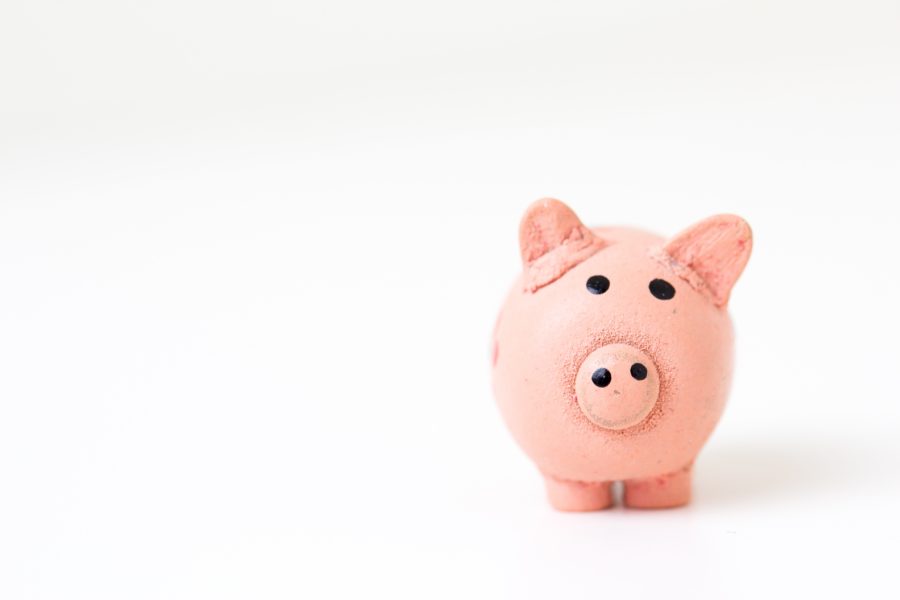I recently received an email from Marcus—Goldman Sachs’ relatively new entrant into the online banking business—saying they increased the yield on my savings account to 1.80%. Synchrony Bank, the online bank formerly part of GE Capital, had upped the yield on their high-yield savings accounts to 1.75%, and Marcus simply could not let this stand.
This is how it has been for the past year or two since the Fed started raising its target interest rate. A race with no finish in sight between a handful of horses vying for online banking supremacy. American Express, Capital One, Discover, and Ally, the former GMAC financing unit of General Motors, are now neck-and-neck with Synchrony at 1.75%. Meanwhile, the complacent majors like Wells Fargo, Bank of America, and Chase have yet to even step out of the starting gate, offering yields of only zero-point-zero-who-gives-a-crap.
While savings accounts aren’t exactly on the glamorous side of investing, they are nonetheless a very important component of a sound financial plan. According to a May 2018 report from the Federal Reserve Board, four in ten Americans could not cover an unexpected $400 expense without selling something or borrowing money. If that seems absurd, it’s actually an improvement from 2013 when only half of adults could handle that expense.
It is important to have unfettered access to money without paying a fee, penalty, or interest, or having to sell something at a steep discount to cover unforeseen expenses or to float you in the event of work displacement. But how much should you set aside in an emergency savings account?
A common rule of thumb is you should have six months of expenses in your emergency savings account, but this is really just a starting point. What follows are a few questions to consider in determining the right number for you.
How many sources of income do you have? If you and your family rely on only one income, you’ll want to save more. If you have multiple sources of stable income, or have other significant resources you could tap such as credit card points, a few hundred thousand airline miles, or a large amount of gold buried in several different locations around Pawnee, you can save less.
How stable is your income? An hourly employee, a business owner, or someone in sales who relies heavily on commission has a less predictable and less stable income compared to a straight salary worker, and therefore should save more.
How reliable is your income? Where we are in the economic cycle matters, and in recessionary times you may want to increase your emergency savings. There is also a significant difference in the likelihood of, say, a tenured professor losing her job versus a store manager at Sears.
How easily could you get another job? Someone with a broadly applicable skill set in an in-demand occupation, such as data scientist, will likely find a much more welcoming job market than, say, a historian specializing in Phoenician maritime arts (oddly specific, but that’s kind of the point).
What do your expenses look like? This is where having a detailed budget comes in handy. You should focus only on critical expenses, as you should be able to quickly downsize the discretionary components of lifestyle if need be. Maybe you pay hundreds of dollars a month for a dog walker. Well, if you don’t have a job, one would hope you could, you know, walk your own dog. What about unplanned expenses? For example, maybe your water heater or furnace is beyond its expected useful life and could go out at any moment, or you know you need to get your wisdom teeth out soon. What if you get injured or sick? Someone with a high insurance deductible will want to save more. If you have large planned expenses, like a new car or a vacation, that’s another reason to increase your savings buffer.
How do market swings impact you emotionally? Having a pile of safe cash money also makes weathering the inevitable market downturns easier from an emotional standpoint. What is most important, ultimately, is finding the amount that helps you sleep well at night. For some that might be $10,000 and for others it might be $100,000.
What if you have high-interest debt? It doesn’t have to be a one-or-the-other decision. To start, split half of your income available for savings towards paying off debt—highest interest rate first—and the other half towards emergency savings. After you’ve built an initial buffer of, say, one month of expenses, you can begin to shift your focus more towards debt repayment.
There is some debate about whether your emergency savings should be invested in the market or just left to sit in a savings account struggling to keep pace with inflation. It’s a personal choice pertaining to your comfort with risk, but I fall on the side of just leaving it in savings. This is supposed to be your rock, and it’s not something you want to see the balance of go down for any period of time. It’s also more likely that you’ll need to access this during an economic downturn, when assets prices are likely to be depressed. So I currently recommend going with Marcus, or any of the other aforementioned online savings accounts.




